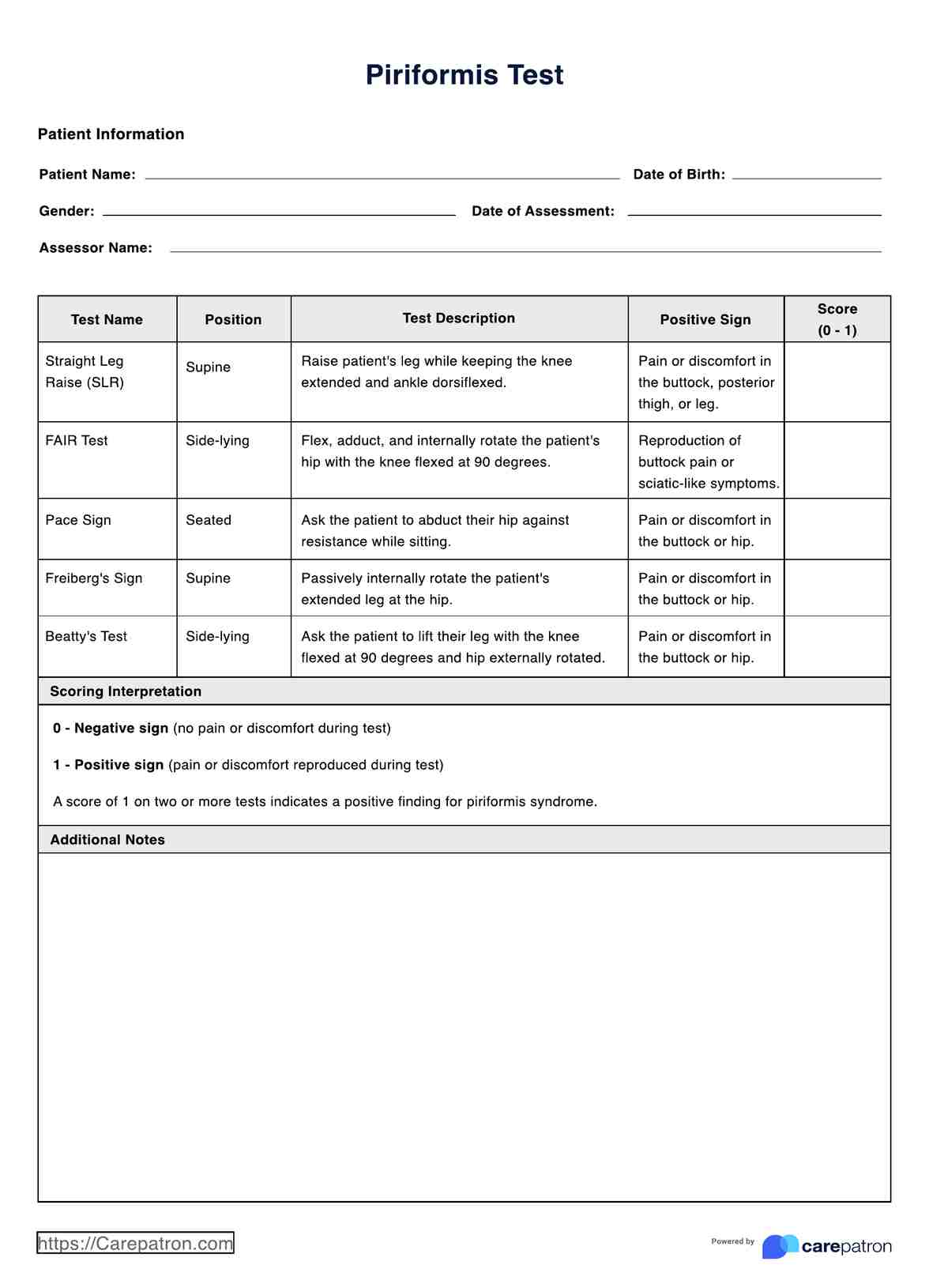Yes, the Piriformis Test is suitable for patients of all age groups, as long as they can cooperate with the test maneuvers and the practitioner modifies the assessment based on the patient's physical abilities.

Piriformis Syndrome Test
Discover the essential Piriformis Test, a valuable diagnostic tool for healthcare professionals to identify piriformis syndrome and offer effective treatments.
Piriformis Syndrome Test Template
Commonly asked questions
While the Piriformis Test is a valuable diagnostic tool, it's essential to use it with a comprehensive clinical assessment, patient history, and, if necessary, additional diagnostic tests to confirm the diagnosis of piriformis syndrome.
The frequency of performing the Piriformis Test depends on the patient's condition, response to treatment, and progress. Regular assessments can monitor the effectiveness of the treatment plan and make adjustments as needed.
EHR and practice management software
Get started for free
*No credit card required
Free
$0/usd
Unlimited clients
Telehealth
1GB of storage
Client portal text
Automated billing and online payments











